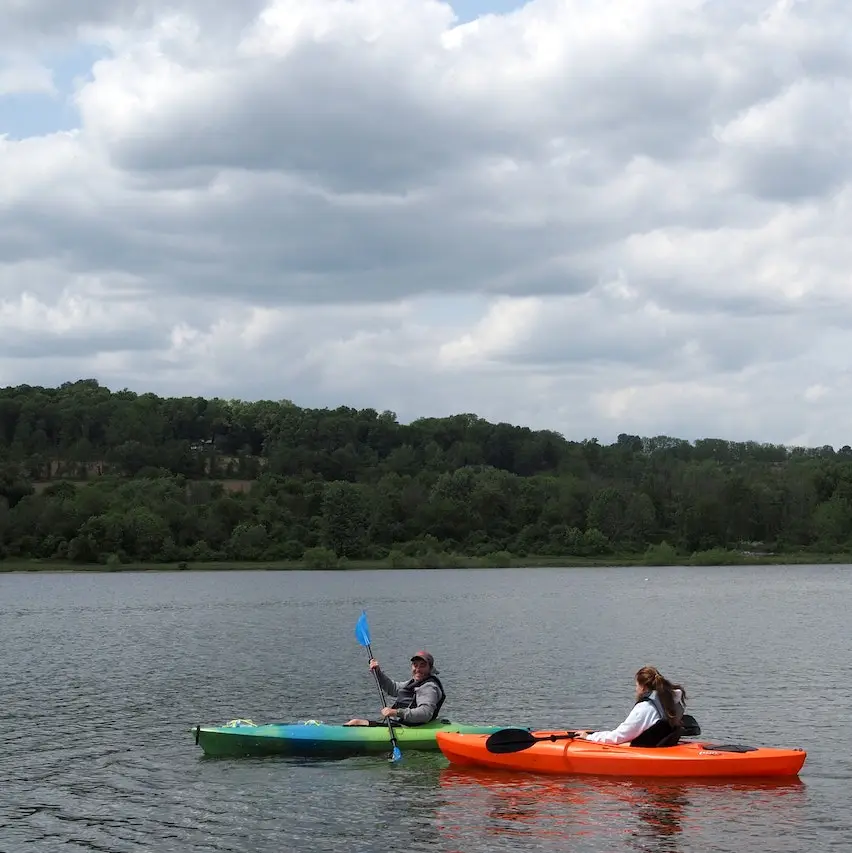Kayaking offers an exhilarating mix of adventure, relaxation, and connection with nature. Whether you’re a casual kayaker or an adrenaline junkie, one question that often arises is, “How far can I actually kayak in a day?” This question isn’t as straightforward as it seems, given that a multitude of variables come into play. In this comprehensive guide, we’ll delve into the factors affecting kayaking distance calculator, tips for planning, and provide a formula for estimating how far you can go.
Factors Affecting Kayaking Distance

Paddler Experience
An experienced kayaker will have not only the stamina but also the technique to paddle more efficiently, covering greater distances.
Kayak Type
The design of the kayak impacts its speed and stability. For instance, touring kayaks are designed for speed and can cover greater distances, while recreational kayaks are designed for stability and are generally slower.
Water Conditions
Factors like current, wind, and tide can significantly affect your speed. Paddling downstream or with the wind can make a remarkable difference.
Paddling Time
The amount of time you spend actually paddling versus taking breaks will directly influence the distance covered.
Equipment
Proper paddles, comfortable seats, and other equipment can reduce fatigue, allowing you to kayak longer.
General Rule of Thumb for Kayaking Distance
A general rule of thumb for estimating how far you can kayak in a day is 2 miles per hour for a total of about 10-20 miles for a full day trip. However, this is just a baseline and can vary widely depending on the factors discussed above.
The Kayaking Distance Formula
To calculate a more accurate distance, you can use the following formula:
Distance (miles)=Average Speed (mph)×Paddling Time (hours)
Average Speed
Your average speed will depend on both you and your kayak. Recreational kayaks average about 2-3 mph while touring kayaks can average 4-5 mph.
Paddling Time
This is the actual time you are paddling, not the total trip time which might include breaks.
Tips for Planning a Kayaking Trip
Map Your Route
Before you head out, always map your route. Make sure you know where you can stop for breaks and how to reach help in case of an emergency.
Account for Wind and Currents
Check the weather forecast and understand how wind and current will affect your trip. Always plan for a buffer time in case conditions are worse than expected.
Have an Emergency Plan
Always carry emergency supplies like a first-aid kit, extra food and water, and means of communication.
Sample Trip Calculation
Let’s assume you are planning a day trip in a touring kayak with an average speed of 4 mph and aim to paddle for a total of 6 hours.
Distance = 4 mph×6 hours = 24 miles
If you add breaks and leisure time for sightseeing and lunch, you might be out on the water for around 8-9 hours, but your paddling time still remains 6 hours.
Kayaking Distance Records
For those who are interested in pushing the boundaries, the world of competitive kayaking has some staggering records. The Guinness World Record for the greatest distance kayaked in 24 hours is 156.41 miles, achieved by Carter Johnson (USA) at Lake Merced, San Francisco, USA, on 29-30 April 2014.
Final Thoughts
Understanding and calculating kayaking distances isn’t just a matter of solving an equation; it’s about knowing your limits, your equipment, and the conditions you’ll be facing. Armed with this information, you can embark on a kayaking adventure that is both enjoyable and safe.
So the next time you’re planning a kayaking trip, remember to take into account all these factors to calculate a realistic distance you can cover. Happy paddling!
Read more about kayaks:
- What to Wear for Kayaking in Summer
- How to Store a Kayak in the Garage
- What is a Skeg on a Kayak
- What is a Tandem Kayak
- How to Build a Homemade Kayak Launch
- How to Get in a Kayak
- What to Wear for Kayaking?
- How to Transport a Kayak Without a Roof Rack?
- How to Build a Kayak Rack for an RV?
- Are Inflatable Kayaks Safe?
- How to Build a Rack for Kayaks?
- Do Kayaks Have a Weight Limit?
- Wilderness Systems Pungo 120 Kayak Review
- Is it hard to kayak?
- How to Lock a Kayak?
- Where to Kayak with Manatees?
- Pungo 120 vs 125: Which is the Better Choice?
- Tips to Prevent a Kayaking Flip Over and Stay Safe

Hi, I’m Steve, the passionate kayaking enthusiast behind Outdoor Bravo. As an avid adventurer and nature lover, kayaking has been a central part of my life for as long as I can remember. My love affair with the water began during my childhood, and it has only grown stronger over the years. From serene lakes to rushing rivers and even challenging ocean tides, I’ve navigated various water bodies, seeking new thrills and unforgettable experiences.
